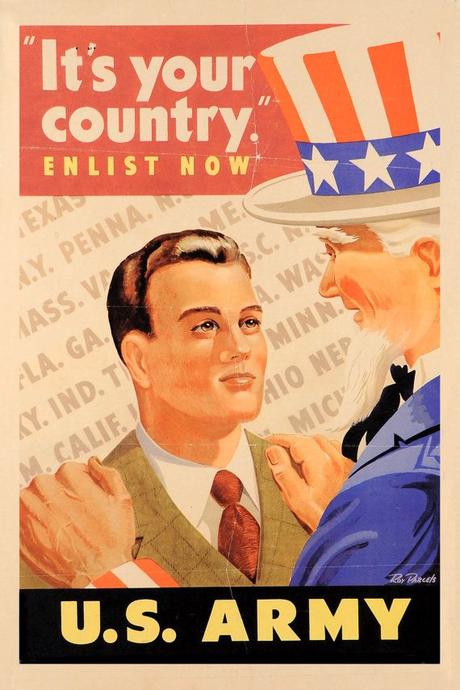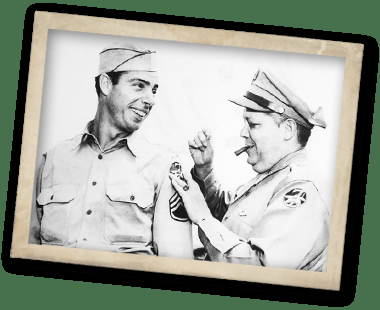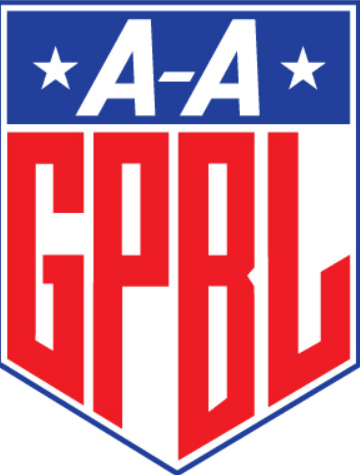Several years ago, I wrote about baseball during World War I with the intention of following up with a post about the game during World War II. It has taken longer than I intended to circle back, but today, I finally make the return to what I started.

World War II began in September 1939, though the United States did not enter the war until December 1941, after the attack on Pearl Harbor by Japan. During the 1941 season, prior to the U.S. entering the war, Ted Williams batted .406, Joe DiMaggio hit safely in 56 consecutive games, and Lefty Grove earned his 300th career win. These led Major League Baseball to enjoy one of its most popular seasons to date, with its fifth-highest attendance total of 9.6 million spectators. As the war raged on through the 1942 and 1943 seasons, baseball would see a decline in attendance to 8.1 million and 7.4 million respectively. However, attendance would rebound during the 1944 season to pre-war levels, and by 1945, the league experienced an all-time high of 10.8 million people attending baseball games.
At first, there was some speculation as to whether or not baseball would even continue during the war. On January 14, 1942, baseball commissioner Kennesaw Mountain Landis wrote a letter to President Franklin Roosevelt asking if baseball should stay in operation. FDR’s response to Landis became known as the Green Light Letter, stating, “I honestly feel that it would be best for the country to keep baseball going. […] And, incidentally, I hope that night games can be extended because it gives an opportunity to the day shift to see a game occasionally.” Roosevelt did also stress that any ballplayer capable of joining the military should absolutely do so, but he felt the popularity of the sport would not be diminished as a result.
Over 500 major leaguers and 4,000 minor leaguers saw action during World War II. The first major leaguer drafted into the war was pitcher Hugh Mulcahy, and the first to enlist was pitcher Bob Feller. Other major leaguers involved in the war included stars like Joe DiMaggio, Ted Williams, Yogi Berra, and Hank Greenberg. As a result of so many major leaguers joining the war effort, many players who previously did not see a lot of action on the diamond and a lot of minor league players now had the opportunity to play big roles on major league ball teams.

Some players were classified as 4-F during the draft, meaning that they were not fit for military service. There was some criticism of the fact that there could be some individuals identified as unfit for military service, yet still in good enough condition to play baseball. Others noted that 4-F status was determined by Army and Navy doctors, and therefore was not related to their status as baseball players. Furthermore, while some 4-Fs may not have served in the military, many of them did serve in defense industries, and thus still contributed to the war effort.
During the war, military personnel showed overwhelming support for the continuation of baseball. Myriad service men’s teams formed across all theatres of war, and equipment was even made available to these teams. Exhibition games were put on by military teams for the entertainment of the troops, and pickup games were aplenty among deployed servicemen and in POW camps during the war.
Some known baseball stars were deliberately kept out of harm’s way, such as Joe DiMaggio, who spent most of his military career playing for baseball teams and in exhibition games against fellow major leaguers and minor league players. But this wasn’t the case for all major leaguers. Warren Spahn, for example, served as a combat engineer in Europe and was decorated with a Bronze Star, Purple Heart, and a Battlefield Commission for action at the Battle of The Bulge. Hoyt Wilhelm also earned a Purple Heart fighting in Europe.
Warren Spahn (medium.com)
In the fall of 1942, many minor league teams disbanded, as many minor league players found themselves being drafted to serve in the war. This plus the concern that major league teams might be in danger of collapsing prompted Philip K. Wrigley to begin the All-American Girls Softball League. Before long, the rules were changed and the name of the new organization was updated to the All-American Girls Baseball League. 280 women were invited to tryouts in Chicago, where 60 were ultimately chosen to become the first women to play professional baseball. Teams consisted of 15 players, a manager, a business manager, and a woman chaperone, and salaries ranged from $45 to $85 per week. League play began May 30, 1943, and each team played 108 games in the season. The league peaked in 1948, when a total of ten teams attracted 910,000 fans. However, following the war, the league began to break down and eventually folded in 1954. In the end, the AAGPBL gave over 600 women the opportunity to play professional baseball.

The end of World War II finally came on September 2, 1945, when U.S. General Douglas MacArthur accepted Japan’s formal surrender aboard the U.S. battleship Missouri. Over the course of the war, two MLB players lost their lives in battle: Captain Elmer J. Gedeon (Washington Senators) died during a bombing mission over France on April 20, 1944 and First Lieutenant Harry O’Neill (Philadelphia Athletics) was killed by a sniper on Iwo Jima on March 6, 1945. Hundreds of men who served in World War II played Major League Baseball, with even more having spent time playing for minor league teams. Most survived the war, and continued their careers on the field, but a small number paid the ultimate sacrifice, and never returned to the field.

